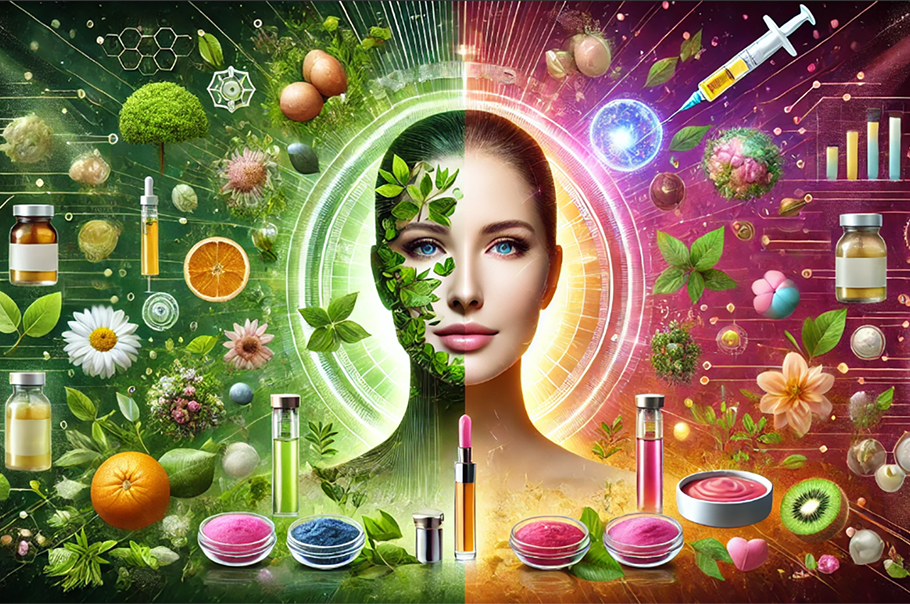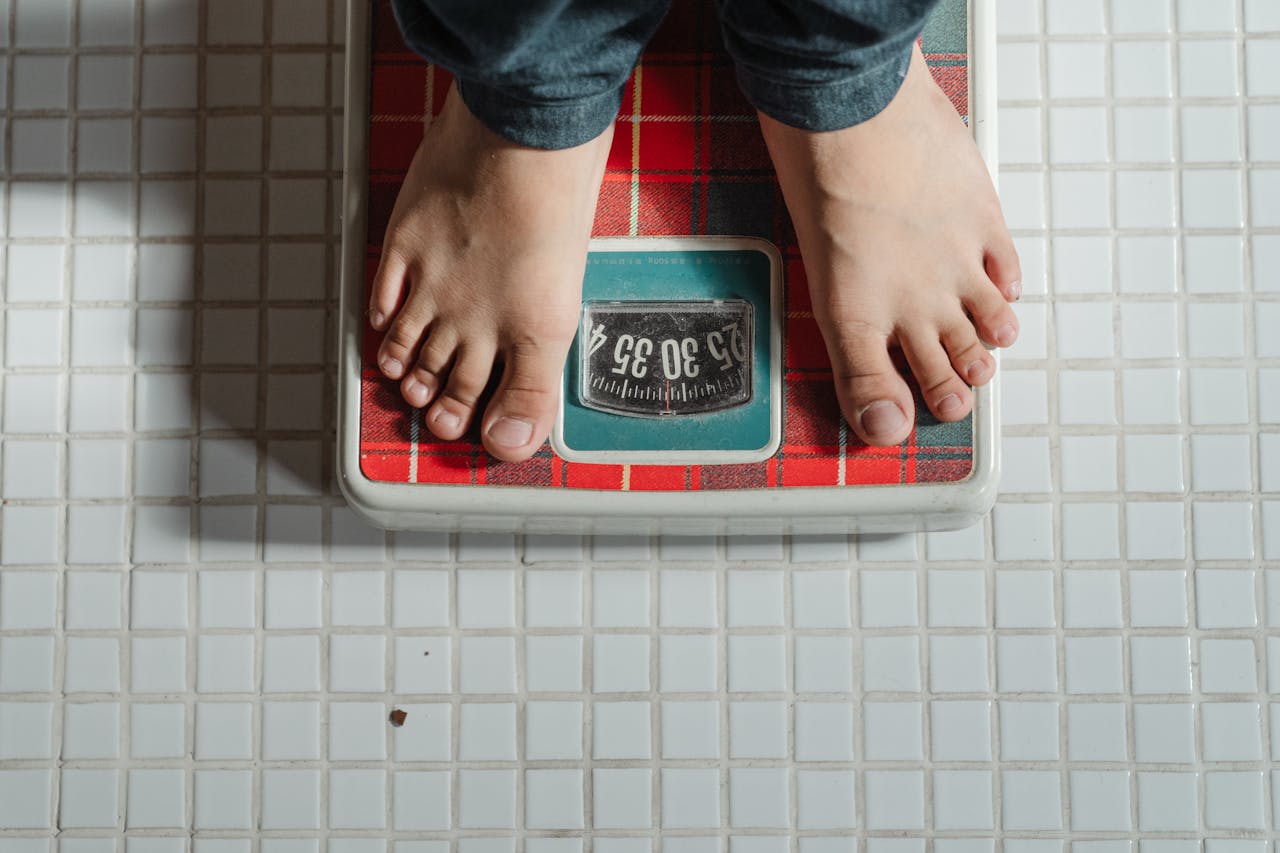Ozempic and other GLP-1 drugs are reshaping food, beauty, alcohol, and belonging. From snack sales to body ideals, marketers are rebranding around the “Ozempic Nation.”

Bye bye Botox?
Navigating beauty extremes to find the perfect balance
Reading Lina Abascal’s recent piece in the LA Times on beauty trends had us chuckling at the clear swing of the pendulum from one extreme to the other. Let’s dive deeper into this rabbit hole and see how marketing geniuses can find a pathway leading to the middle ground where they can make the most money.
The beauty industry’s instant fix craze
Injectables, like Botox and fillers, became the beauty industry’s darlings in the early 2000s. The appeal was a no-brainer: fast, effective, and cheaper than going under the knife. Botox, the wrinkle-fighting superhero, works by temporarily freezing muscles, while fillers use goodies like hyaluronic acid to plump, smooth, and restore volume.
These treatments were marketed on their convenience and instant gratification. Imagine popping into a clinic during your lunch break and walking out looking refreshed and youthful. McKinsey research shows that the global aesthetics injectables market could potentially expand by 12 to 14 percent annually over the next five years, provided manufacturers and providers tap into the key emerging trends.
The cultural impact? Huge. Social media influencers and celebrities openly flaunted their Botox and filler regimens, making these procedures as common as getting a haircut. Reality TV and makeover shows further normalized injectables, turning them into a mainstream beauty staple. And while older women remain the key target audience, marketers managed to reach men and even young people, pulling them in for regular treatments. Cha-ching!
The pillow face predicament
Injectables like Botox and fillers might seem like a magic wand for aging woes, but there’s a fine line between fabulous and Frankenstein. Especially when the young and restless jump on the bandwagon.
Preventative Botox in your 20s? Sounds like a dream, right? But dermatologists are waving red flags. While preventative Botox is touted as a way to stave off wrinkles, overuse in your twenties might actually accelerate aging by weakening facial muscles over time, leading to a less youthful appearance in the long run.
And Botox isn’t the only product people have regretted. Many have found that overzealous use of fillers leaves folks looking like they’re perpetually mid-allergic reaction, a phenomena known as “pillow face.” Too much filler or poorly placed injections can lead to that unmistakable puffiness.
The backlash online from seeing the results of seemingly endless surgeries is cruel and often unfair but the alarm is real.
Cue the pendulum swing to the end of injections and dissolving fillers, where hyaluronidase swoops in to save the day, melting away the excess and hopefully, restoring some semblance of natural beauty. Hollywood has its share of overdone faces turning back the clock, not on age, but on too many injectables.
But how will the industry make money?
While we’re all dreaming of a world where aging is effortless and natural, let’s get real—the beauty industry isn’t going to sit back and watch their cash cow disappear. Nope, they’ll continue to tap into our insecurities, but with a new twist.
The industry is savvy. If injectables are losing their shine, they’ll pivot to what’s trending. Enter the natural beauty movement, where the promise of ageless skin comes wrapped in words like “organic,” “clean,” and “non-toxic.” Brands are already cashing in by marketing products and treatments that claim to be gentler and more authentic. Think less “frozen face” and more “glowing goddess.”
The rise of “natural” alternatives
The next big thing (for now) is the growing trend toward “natural” beauty treatments like plasma injections, red-light therapy, and facial massages. These aren’t just random whims—they’re part of a calculated industry shift.
These treatments can be just as lucrative as injectables, especially when marketed as premium, bespoke experiences. Plasma injections, for example, can cost over $1,000 per session. Facial massages and laser treatments can easily run into the hundreds. The allure of being toxin-free is marketed heavily, and consumers are willing to pay a premium for the peace of mind that comes with these natural-sounding options.
Brands like Tatcha use natural ingredients like rice and green tea, enhanced with advanced technology for top-notch results. Their personalized consultations and educational content about ingredient significance make consumers feel special, and this builds trust and consumer loyalty. Pay attention to the copy they choose, it’s not just a beauty ritual, it’s your beauty ritual.
Endless new products
The beauty industry thrives on innovation, or at least the appearance of it. Expect an avalanche of new products claiming to be the next big thing in natural beauty. From serums packed with exotic ingredients to at-home devices promising spa-like results, there’s no shortage of ways the industry will continue to empty our wallets.
Remember the explosion of BB creams, CC creams, and the subsequent alphabet soup of skincare products? Or the craze over activated charcoal in everything from face masks to toothpaste? These trends show how the industry continually reinvents the wheel, packaging the same promises of youth and beauty in ever-new guises.
Every few years, a “revolutionary” ingredient emerges—whether it’s retinol, peptides, or hyaluronic acid—each time hailed as the fountain of youth. These ingredients are repackaged into new serums, creams, and treatments, keeping the market perpetually buzzing with the latest and greatest. And marketers know exactly how to get us to spend our hard-earned cash on every little thing they come up with. And their reach is growing.
Then there’s the tech side of beauty. Devices like jade rollers, derma rollers, and LED light masks have all had their moment in the spotlight, marketed as must-have tools for achieving spa-like results at home. They promise convenience and professional-level results, enticing consumers to invest in a drawer full of junk as they try desperately to reverse the signs of aging.
Celebrity endorsements
Celebrities are jumping on the natural beauty bandwagon too. Their endorsements lend credibility and glamour to these treatments, making them even more enticing to the average consumer. The trendsetters who once flaunted their Botox now boast about their “natural” beauty routines, driving their legions of followers to do the same.
While the trend may lean toward natural alternatives though, don’t be fooled. Celebrities often walk a fine line between advocating for natural solutions and opting for surgical tweaks to maintain their image
Crafting the narrative
Marketers are experts at storytelling. By crafting compelling narratives around natural products, they tap into your desires for beauty, authenticity and wellness. These stories often highlight the origins of ingredients, ethical sourcing, and the promise of gentler, safer beauty solutions. Think lush visuals of botanical ingredients and testimonials that evoke a sense of purity and simplicity.
But it doesn’t stop there. Marketers skillfully tap into our insecurities, whether it’s the fear of aging, blemishes, or not looking our best. They create a sense of urgency and necessity, making us believe that natural products are the key to resolving these insecurities. By combining authenticity with emotional appeal, they make us feel that buying these products is not just a choice but an essential step towards achieving the beauty and confidence we crave.
Finding the middle path
As we’ve seen, the pendulum in the beauty industry swings wildly—from the extreme of injectables to the rise of “natural” treatments. However, the real genius lies in finding a middle path. Marketers will continue to drive consumer preferences, blending the best of both worlds: the efficacy of advanced technology with the appeal of natural ingredients.
By crafting compelling narratives, leveraging influencers, and creating a sense of exclusivity, they’ll guide us towards balanced beauty solutions that promise both authenticity and results. In this ever-evolving landscape, marketing remains the powerful force steering the beauty ship.
They’ve got their hooks in you.
FADS rise quickly, burn hot and fall out. They say you’re fat, you’re no fun, you need to relax, and you might even die alone.
In fact, FADS bank on the fact that you already believe all of that.
Ready to learn how it works?


